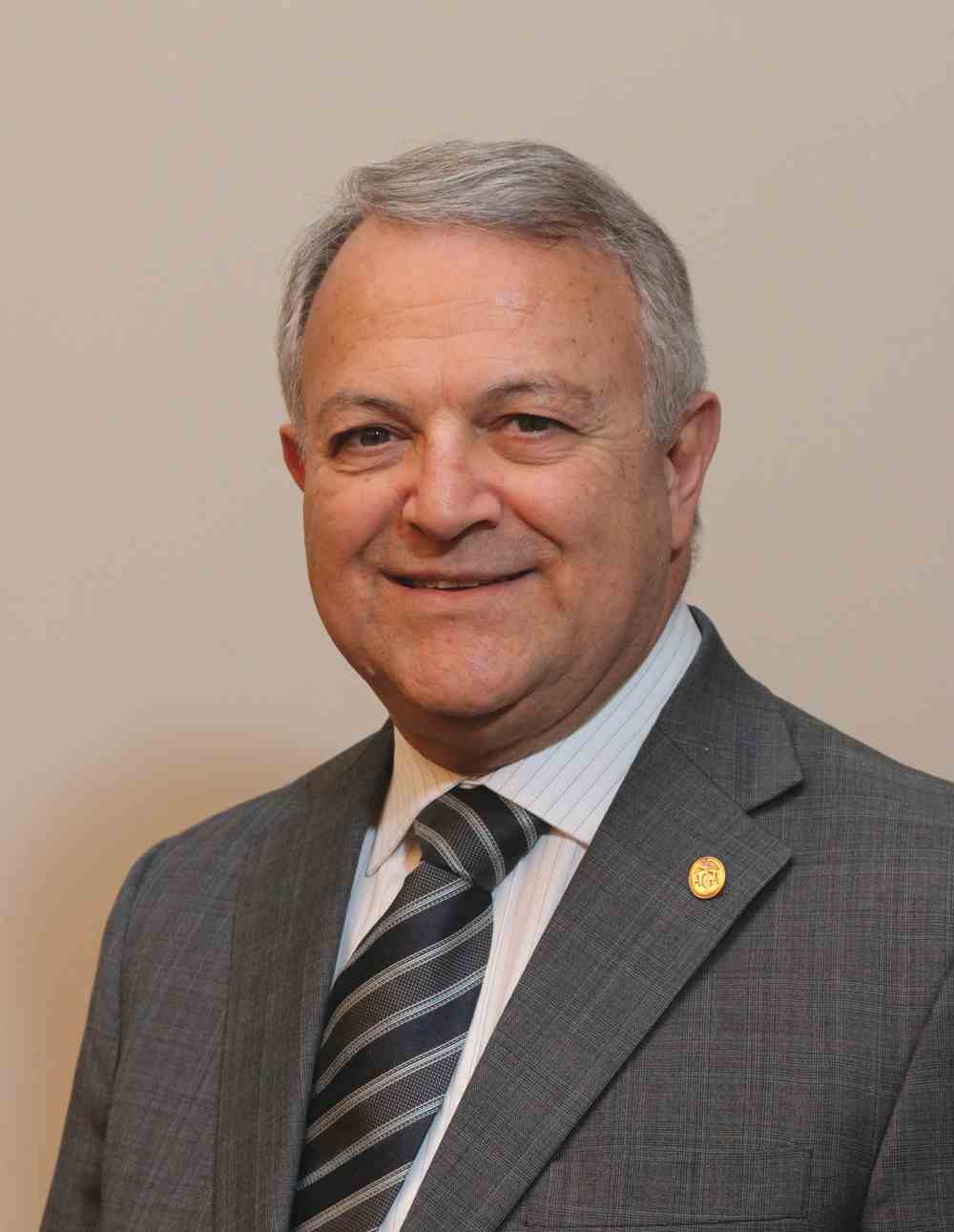User login
Gastroparesis is defined as delayed gastric emptying with associated symptoms in the absence of mechanical obstruction. The cardinal symptoms are upper abdominal pain, postprandial fullness, bloating, early satiety, nausea, and, with more severe disease, vomiting. Weight loss, malnutrition, dehydration, electrolyte imbalance, bezoar formation, and aspiration pneumonia may occur in advanced cases. Unfortunately, there are few approved or efficacious treatment options for diabetic gastroparesis. The 5-HT4 receptor agonist, cisapride, has been withdrawn from the prescription markets in most countries.
The study aim was to evaluate the efficacy of relamorelin on disease symptoms and gastric emptying in moderate to severe diabetic gastroparesis. In a 12-week, double-blind, placebo-controlled, parallel-group, randomized, controlled trial, with a 2-week, single-blind placebo run-in, patients were randomized to 10 microg b.i.d., 30 microg b.i.d., 100 microg b.i.d., or placebo b.i.d. Patients completed a daily e-diary of symptoms (Diabetic Gastroparesis Symptom Severity Diary [DGSSD]: nausea, abdominal pain, postprandial fullness, and bloating on a 0–10 scale) and vomiting episodes, which were summarized by treatment week. The primary endpoint was a change from baseline in vomiting frequency; a key secondary endpoint was change from baseline in a four-symptom composite of DGSSD symptoms.
A longitudinal analysis over the 12-week trial showed there were reductions in nausea, postprandial fullness, abdominal pain, and bloating individually and as a composite score. Relamorelin accelerated gastric emptying T1/2 at all three doses compared with placebo. However, there were no effects on vomiting frequency, which showed a high placebo response. More hyperglycemia events and diarrhea events were observed with relamorelin treatment compared with placebo. The diarrhea reflects the previously demonstrated stimulation of colonic transit and motility and reduction of symptoms of constipation in patients with chronic constipation. The hyperglycemia likely resulted from accelerated gastric emptying rather than potential inhibition of insulin production, which has been reported with high levels of ghrelin in animal studies or with high levels of ghrelin associated with starvation.
Thus, relamorelin demonstrated substantially improved core symptoms of diabetic gastroparesis, was generally safe and well tolerated, and should be further assessed in pivotal phase 3 trials. The results in this trial suggest that there is no dose-response relationship between the three doses of relamorelin tested and that future trials of relamorelin might not need to include the 100-microg b.i.d. dose. Importantly, this study also suggests the importance to prospectively manage the hyperglycemia in future trials.
Dr. Camilleri is a faculty member in the department of gastroenterology and hepatology at the Mayo Clinic in Rochester, Minn. His comments were made during the AGA Institute Presidential Plenary at the Annual Digestive Disease Week.
Gastroparesis is defined as delayed gastric emptying with associated symptoms in the absence of mechanical obstruction. The cardinal symptoms are upper abdominal pain, postprandial fullness, bloating, early satiety, nausea, and, with more severe disease, vomiting. Weight loss, malnutrition, dehydration, electrolyte imbalance, bezoar formation, and aspiration pneumonia may occur in advanced cases. Unfortunately, there are few approved or efficacious treatment options for diabetic gastroparesis. The 5-HT4 receptor agonist, cisapride, has been withdrawn from the prescription markets in most countries.
The study aim was to evaluate the efficacy of relamorelin on disease symptoms and gastric emptying in moderate to severe diabetic gastroparesis. In a 12-week, double-blind, placebo-controlled, parallel-group, randomized, controlled trial, with a 2-week, single-blind placebo run-in, patients were randomized to 10 microg b.i.d., 30 microg b.i.d., 100 microg b.i.d., or placebo b.i.d. Patients completed a daily e-diary of symptoms (Diabetic Gastroparesis Symptom Severity Diary [DGSSD]: nausea, abdominal pain, postprandial fullness, and bloating on a 0–10 scale) and vomiting episodes, which were summarized by treatment week. The primary endpoint was a change from baseline in vomiting frequency; a key secondary endpoint was change from baseline in a four-symptom composite of DGSSD symptoms.
A longitudinal analysis over the 12-week trial showed there were reductions in nausea, postprandial fullness, abdominal pain, and bloating individually and as a composite score. Relamorelin accelerated gastric emptying T1/2 at all three doses compared with placebo. However, there were no effects on vomiting frequency, which showed a high placebo response. More hyperglycemia events and diarrhea events were observed with relamorelin treatment compared with placebo. The diarrhea reflects the previously demonstrated stimulation of colonic transit and motility and reduction of symptoms of constipation in patients with chronic constipation. The hyperglycemia likely resulted from accelerated gastric emptying rather than potential inhibition of insulin production, which has been reported with high levels of ghrelin in animal studies or with high levels of ghrelin associated with starvation.
Thus, relamorelin demonstrated substantially improved core symptoms of diabetic gastroparesis, was generally safe and well tolerated, and should be further assessed in pivotal phase 3 trials. The results in this trial suggest that there is no dose-response relationship between the three doses of relamorelin tested and that future trials of relamorelin might not need to include the 100-microg b.i.d. dose. Importantly, this study also suggests the importance to prospectively manage the hyperglycemia in future trials.
Dr. Camilleri is a faculty member in the department of gastroenterology and hepatology at the Mayo Clinic in Rochester, Minn. His comments were made during the AGA Institute Presidential Plenary at the Annual Digestive Disease Week.
Gastroparesis is defined as delayed gastric emptying with associated symptoms in the absence of mechanical obstruction. The cardinal symptoms are upper abdominal pain, postprandial fullness, bloating, early satiety, nausea, and, with more severe disease, vomiting. Weight loss, malnutrition, dehydration, electrolyte imbalance, bezoar formation, and aspiration pneumonia may occur in advanced cases. Unfortunately, there are few approved or efficacious treatment options for diabetic gastroparesis. The 5-HT4 receptor agonist, cisapride, has been withdrawn from the prescription markets in most countries.
The study aim was to evaluate the efficacy of relamorelin on disease symptoms and gastric emptying in moderate to severe diabetic gastroparesis. In a 12-week, double-blind, placebo-controlled, parallel-group, randomized, controlled trial, with a 2-week, single-blind placebo run-in, patients were randomized to 10 microg b.i.d., 30 microg b.i.d., 100 microg b.i.d., or placebo b.i.d. Patients completed a daily e-diary of symptoms (Diabetic Gastroparesis Symptom Severity Diary [DGSSD]: nausea, abdominal pain, postprandial fullness, and bloating on a 0–10 scale) and vomiting episodes, which were summarized by treatment week. The primary endpoint was a change from baseline in vomiting frequency; a key secondary endpoint was change from baseline in a four-symptom composite of DGSSD symptoms.
A longitudinal analysis over the 12-week trial showed there were reductions in nausea, postprandial fullness, abdominal pain, and bloating individually and as a composite score. Relamorelin accelerated gastric emptying T1/2 at all three doses compared with placebo. However, there were no effects on vomiting frequency, which showed a high placebo response. More hyperglycemia events and diarrhea events were observed with relamorelin treatment compared with placebo. The diarrhea reflects the previously demonstrated stimulation of colonic transit and motility and reduction of symptoms of constipation in patients with chronic constipation. The hyperglycemia likely resulted from accelerated gastric emptying rather than potential inhibition of insulin production, which has been reported with high levels of ghrelin in animal studies or with high levels of ghrelin associated with starvation.
Thus, relamorelin demonstrated substantially improved core symptoms of diabetic gastroparesis, was generally safe and well tolerated, and should be further assessed in pivotal phase 3 trials. The results in this trial suggest that there is no dose-response relationship between the three doses of relamorelin tested and that future trials of relamorelin might not need to include the 100-microg b.i.d. dose. Importantly, this study also suggests the importance to prospectively manage the hyperglycemia in future trials.
Dr. Camilleri is a faculty member in the department of gastroenterology and hepatology at the Mayo Clinic in Rochester, Minn. His comments were made during the AGA Institute Presidential Plenary at the Annual Digestive Disease Week.

